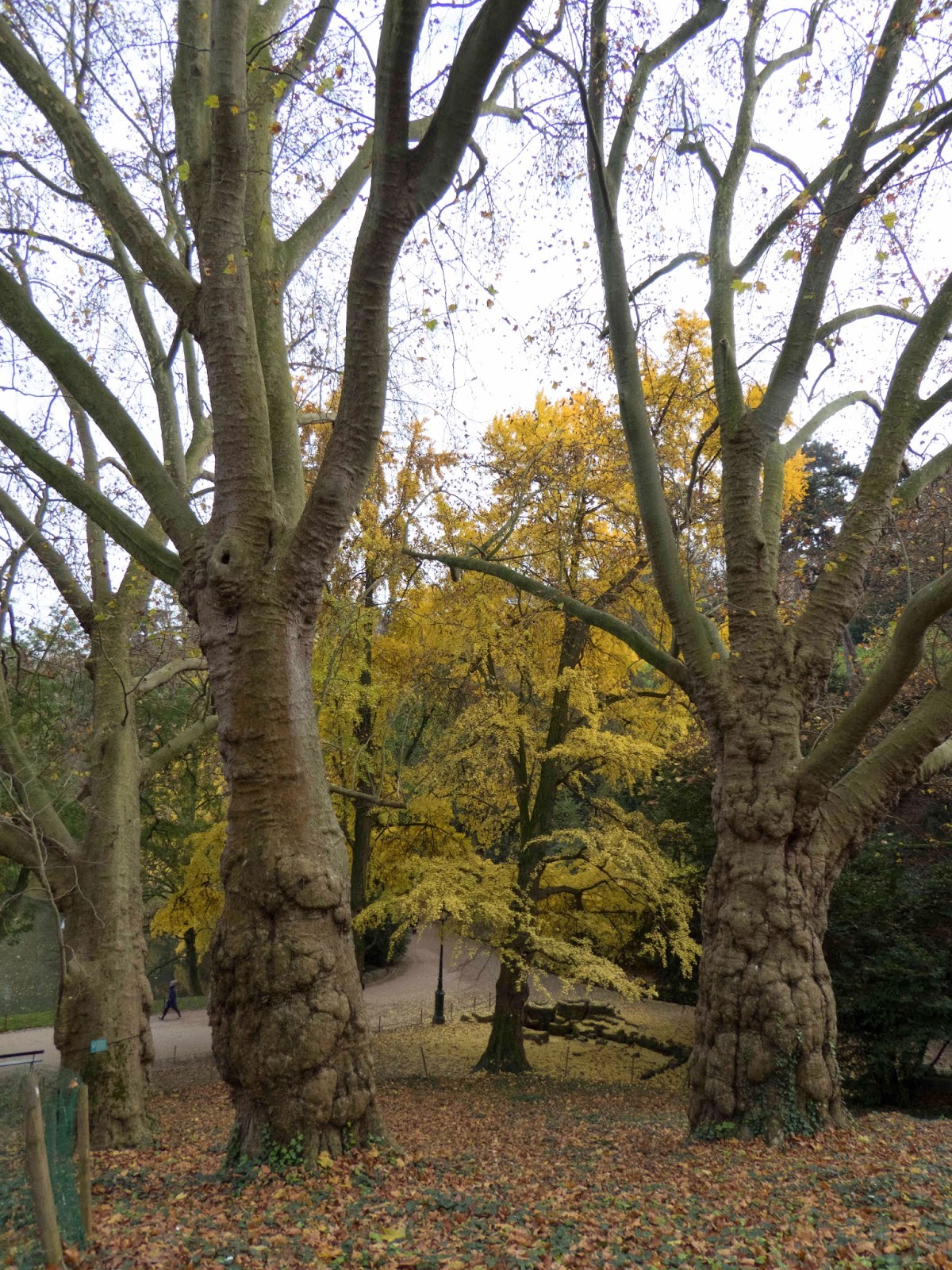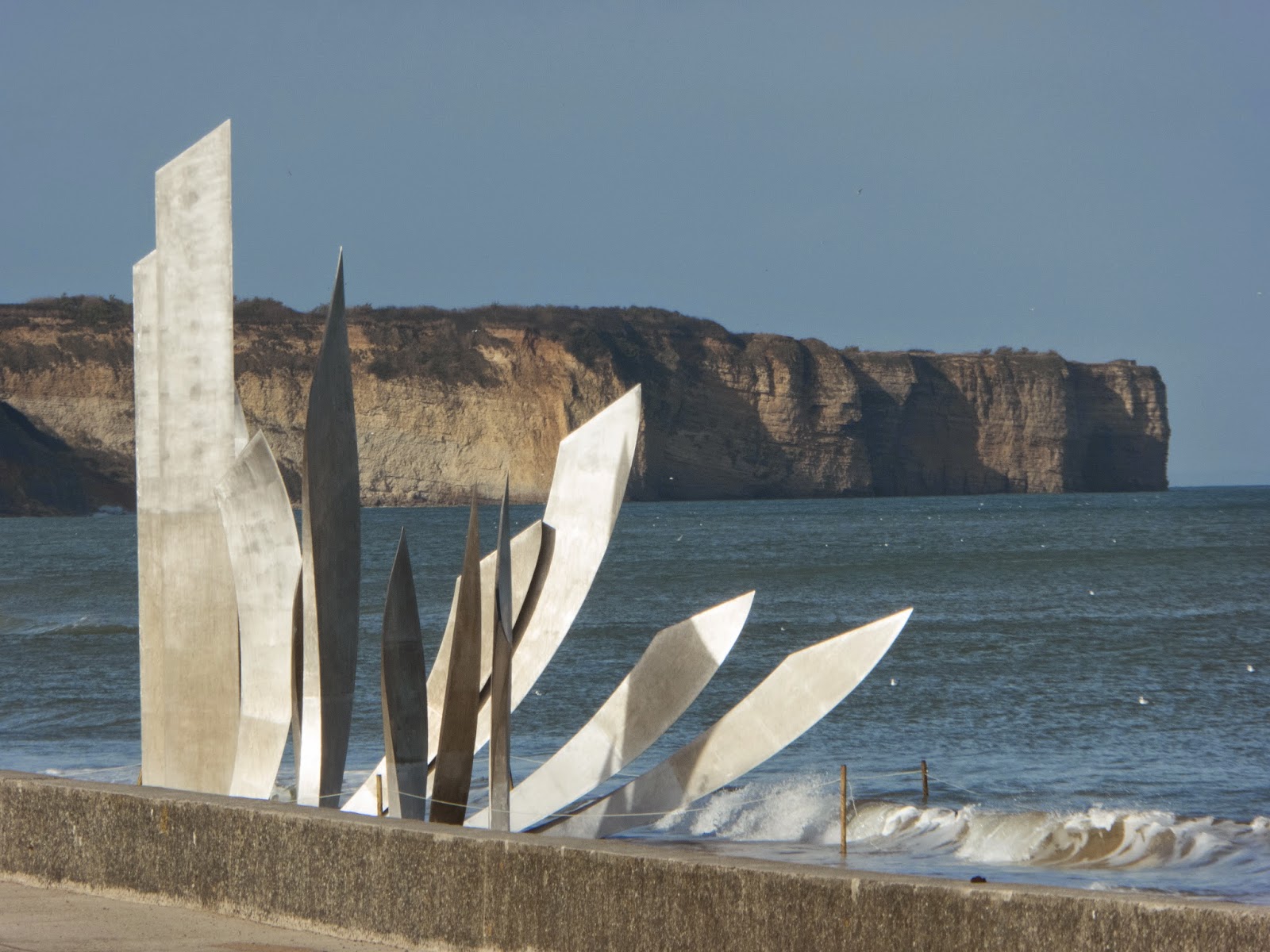The late November weather in Paris is predictably rainy and gloomy. A rare sunny day is a terrible thing to waste. With that in mind, Erica, Eric and I ventured out to the 19th arrondissement to visit the Parc des Buttes-Chaumont for une randonnée (hike).
Parc des Buttes-Chaumont is named for the bare hill (chauve-mont) on which it was built. Due to the chemical composition of the soil, the site was almost completely devoid of vegetation and the neighborhood had a sinister reputation.
 |
| photo Henri Le Secq, 1852 |
All of this changed when Baron Haussmann chose the site for a new pubic park in 1864. With great effort, work was completed in three short years, a remarkable accomplishment. The park opened to acclaim in 1867 for the Paris Universal Exhibition. It has been a popular destination for Parisians ever since. It is most remarkable that this beautiful park, this nature reserve in the city, is a man made creation.
Parc des Buttes-Chaumont centers around an artificial lake, which surrounds a rocky island (Île de la Belvédère). The steep cliffs are formed out of an old gypsum quarry.
At the top of the mount is the Temple de la Sibylle, a smaller re-creation of the ancient Roman Temple of Vesta in Tivoli.
The island is connected by two bridges with the rest of the park. We crossed the 63-meter-long suspension bridge designed by none other that Gustave Eiffel.
On the day we chose to visit the park, the fall foliage was at its peak and honey-colored afternoon sunlight filtered through the clouds. The temperature was brisk but not cold. Tourists were mostly absent. Amongst the many strollers we saw couples in love, families with young children, and contented older couples out for a walk.
After two hours, we returned home with our spirits renewed.

















































